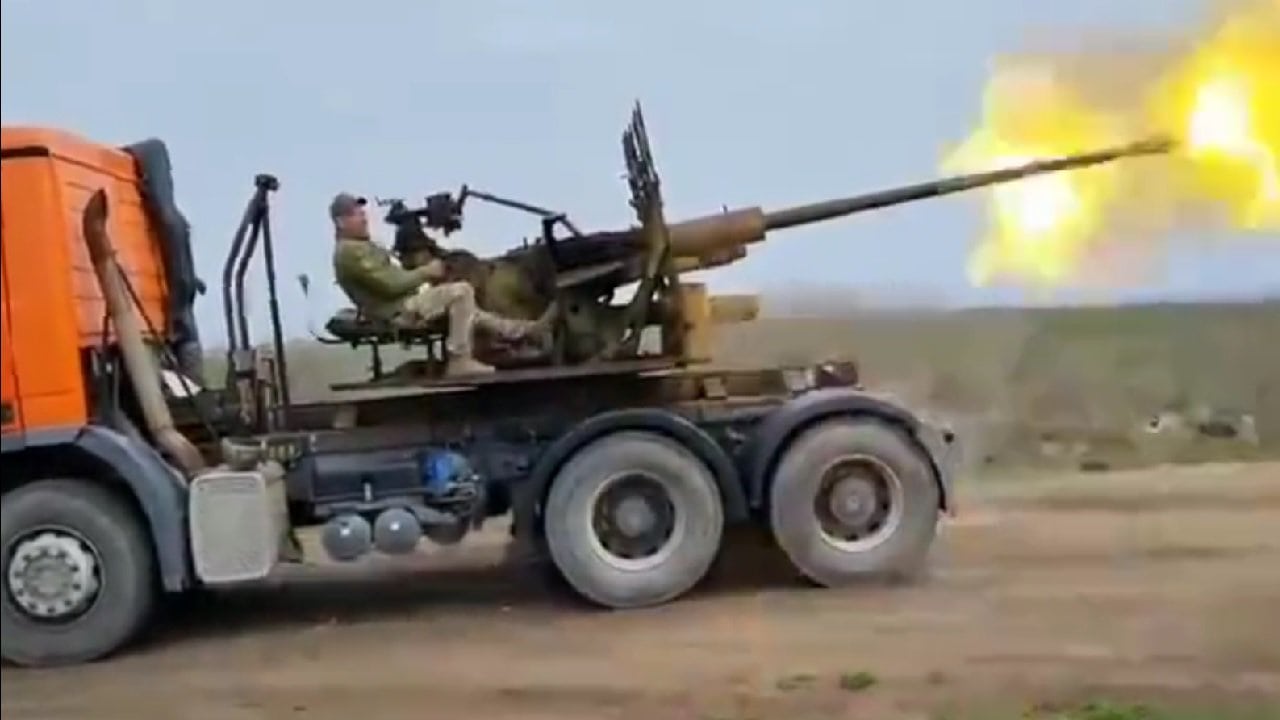The U.S. military is deploying B61-12 nuclear bombs to Europe in response to the Russian threats of a nuclear escalation over the fighting in Ukraine.
According to the Pentagon, the U.S. military will be deploying approximately 180 B61-12 tactical nuclear bombs in military installations across Europe and in Turkey.
Germany, Belgium, and the Netherlands are expected to house 60 bombs (20 munitions each), Turkey 50, and Italy 70.
A Nuclear Weapon with Some History
The B61-12 weighs approximately 850lbs and is about 12 feet tall, making it a light nuclear munition compared with the huge Intercontinental Ballistic Missiles (ICBMs) that make up the majority of the land portion of the U.S. Air Force’s nuclear deterrence.
But what makes the B61-12 truly valuable is the inherent flexibility of the weapon system. Pilots have the ability to adjust the yield of the bomb before it is released and thus deploy a nuclear munition that will best address the threat on the ground.
The B61-12 nuclear bomb can be dialed to four yields (0.3, 1.5, 10, or 50 kilotons). In comparison, the yields of “Little Boy” and “Fat Man” that were dropped on respectively on Hiroshima and Nagasaki had a yield of 13 and 23 kilotons, respectively.
To be sure, the B61 is not a new nuclear weapon system. First built more than 50 years ago, the B61 is a family of nuclear gravity bombs that has undergone several updates.
Up until recently, the Air Force was operating four variants of nuclear munition (B61-3, B61-4, B61-7, and B61-11). But a major update that rolled out last year replaced the 3, 4, and 7 versions of the nuclear bomb with the B61-12. As a result, the Air Force now operates the 11 and 12 versions of the nuclear munition. The updates took place in order to improve the safety and reliability of the weapon.
Full-scale production of the B61-12 just started, and the life extension program of the nuclear munition is expected to cost the Air Force up to $10 billion and should be complete by 2026. The new weapons should have a lifespan of approximately 20 years before they need another update.
“With this program, we’re delivering a system to the Department of Defense that improves accuracy and reduces yield with no change in military characteristics, while also improving safety, security and reliability,” Jill Hruby, Department of Energy Under Secretary for Nuclear Security and National Nuclear Security Agency (NNSA) Administrator, had said last year when the first B61-12 rolled out of production.
One of the main reasons for updating the nuclear munition was to make sure that it was compatible with current and future manned and, potentially, unmanned aircraft.
Ukraine War Drama: B61-12 Nukes In Europe
The deployment of the B61-12 nuclear bombs to Europe coincided with a major NATO nuclear exercise in the Continent. The transatlantic alliance just held its major annual tactical nuclear exercise in Europe, Steadfast Noon 22.
The nuclear exercise is set to finish at the end of the month and brought together 14 NATO members and partners with over 60 aircraft, including F-15E Strike Eagle, F-16 Fighting Falcon, F-35 Lighting II fighter jets, and B-52 Stratofortress strategic bombers. According to NATO, Steadfast Noon 22 focused on honing the strategic nuclear deterrence of the transatlantic alliance and was not intended to provoke Russia or escalate the situation in Ukraine.
Expert Biography: A 19FortyFive Defense and National Security Columnist, Stavros Atlamazoglou is a seasoned defense journalist specializing in special operations, a Hellenic Army veteran (national service with the 575th Marine Battalion and Army HQ), and a Johns Hopkins University graduate. His work has been featured in Business Insider, Sandboxx, and SOFREP.

